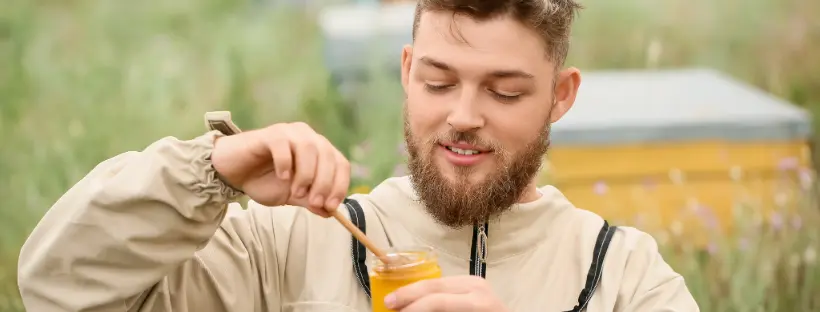Local Honey FAQ (Frequently Asked Questions)
Local honey is produced by beekeepers in your region. It’s usually harvested within a few miles of where you live, reflecting local flowers, climate, and seasons. Buying local means you can often trace the beekeeper and the hives it came from.
Not at all! Crystallisation is a natural process that happens when glucose in honey forms crystals. It’s a good sign that the honey hasn’t been overheated or over-filtered. You can gently warm the jar in hot water to re-liquefy it if you prefer.
Supermarket honey is often blended from multiple countries and may be pasteurised or filtered to extend shelf life. These processes remove flavour, aroma, and beneficial enzymes. Local honey is fresher and full of natural complexity.
Fake or adulterated honey may contain added syrups or imported blends. Check the label for vague origins like “EU and non-EU honey.” Real honey has natural variation, sometimes crystallises, and comes from traceable local sources. More about honey adulteration
Yes! That’s what LocalHoney.uk is for. You can browse our directory to find beekeepers near you, contact them directly, and enjoy genuine honey straight from the source. Find a local beekeeper
Some people believe that eating local honey may help with seasonal allergies because it contains small traces of local pollen. Scientific evidence is limited, but many consumers find it beneficial – and it’s certainly delicious.

